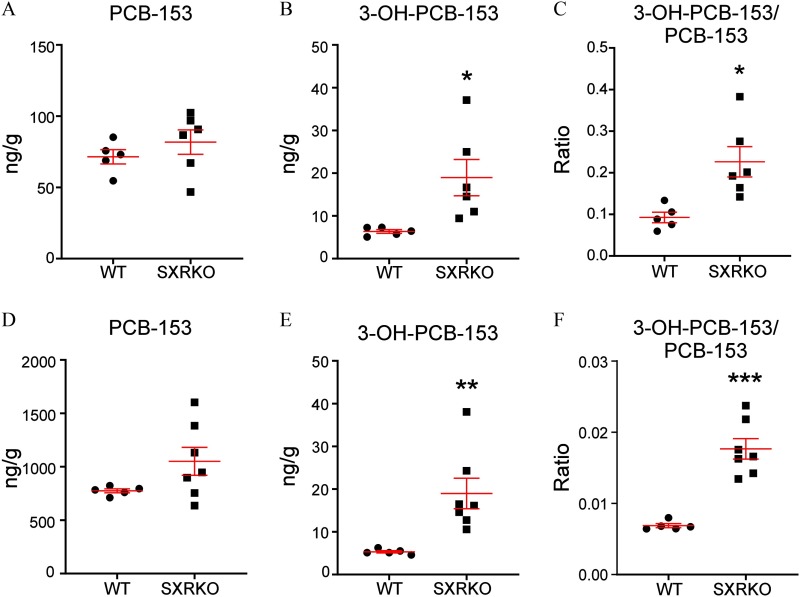Figure 6.
Levels of polychlorinated biphenyl 153 (PCB-153) and the PCB-153 metabolite, 3-OH-PCB-153, in exposed wild-type (WT) and steroid and xenobiotic receptor knockout (SXRKO) mice at 4 wk of age. Levels of (A) PCB-153 and (B) 3-OH-PCB-153 and (C) the ratio of 3-OH-PCB-153 to PCB-153 in the plasma of PCB-153-exposed WT () and SXRKO () mice plotted as . Levels of (D) PCB-153 and (E) 3-OH-PCB-153 and (F) the ratio of 3-OH-PCB-153 to PCB-153 in liver of PCB-153-exposed WT () and SXRKO () mice plotted as . *; **; *** determined by Student’s t-test.

